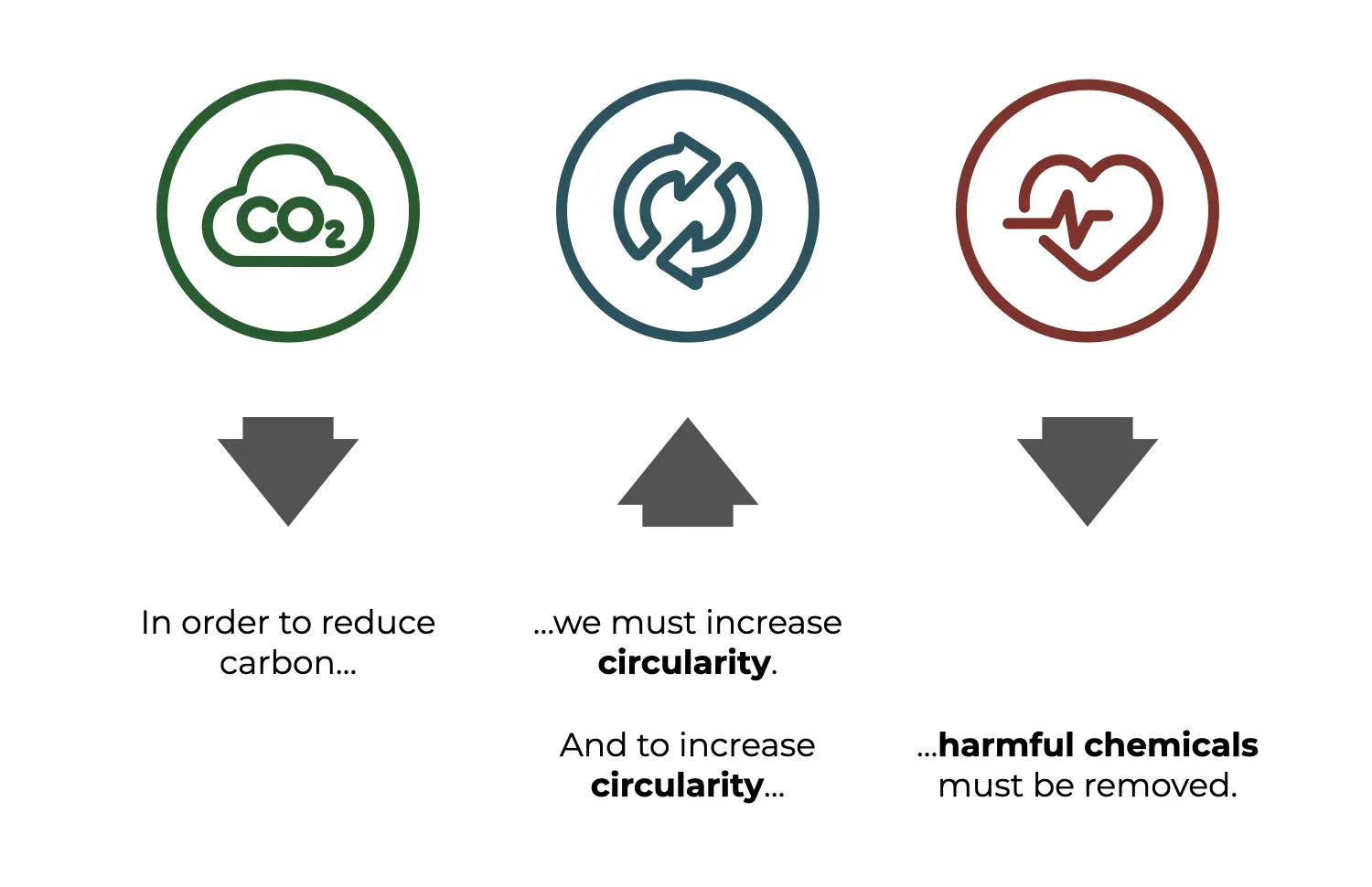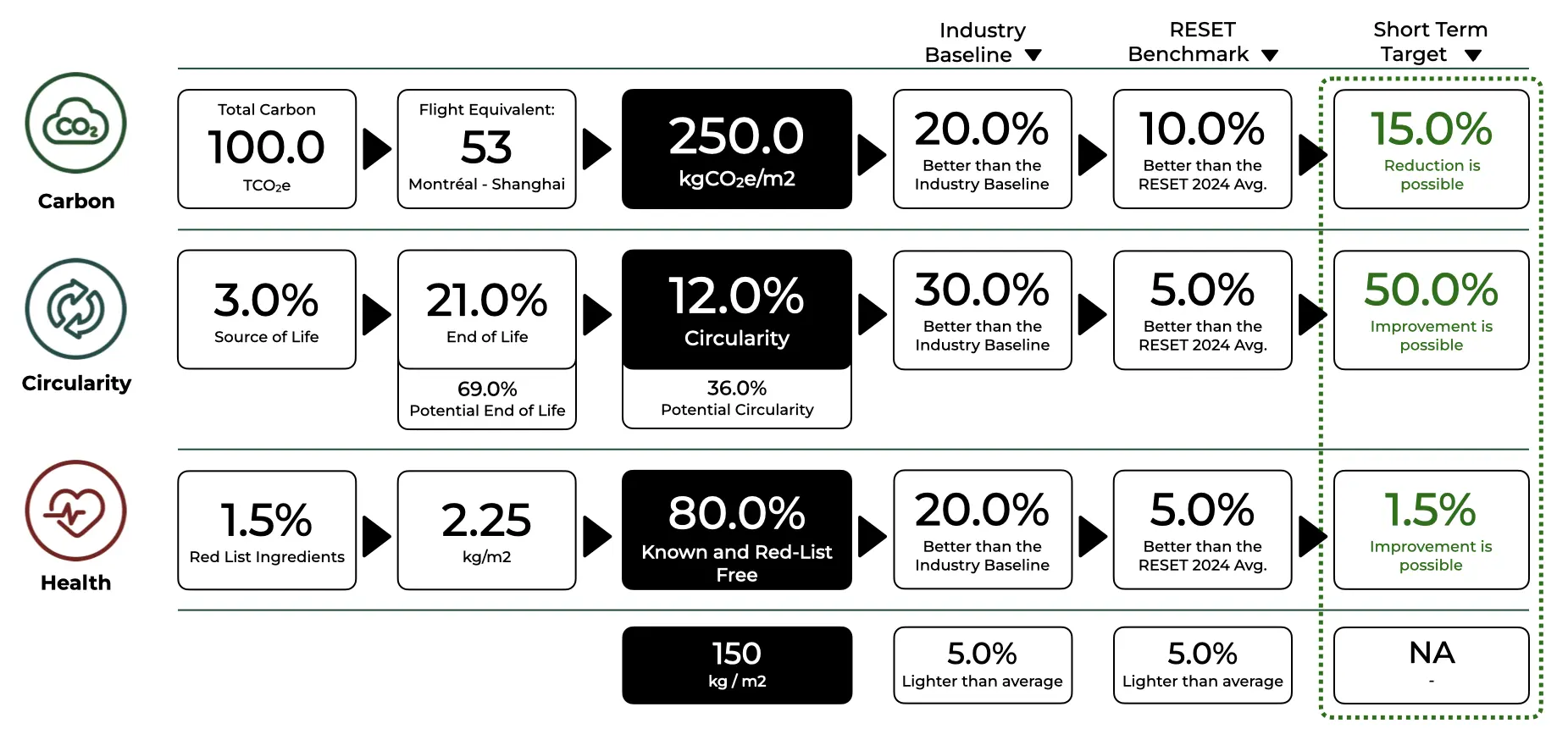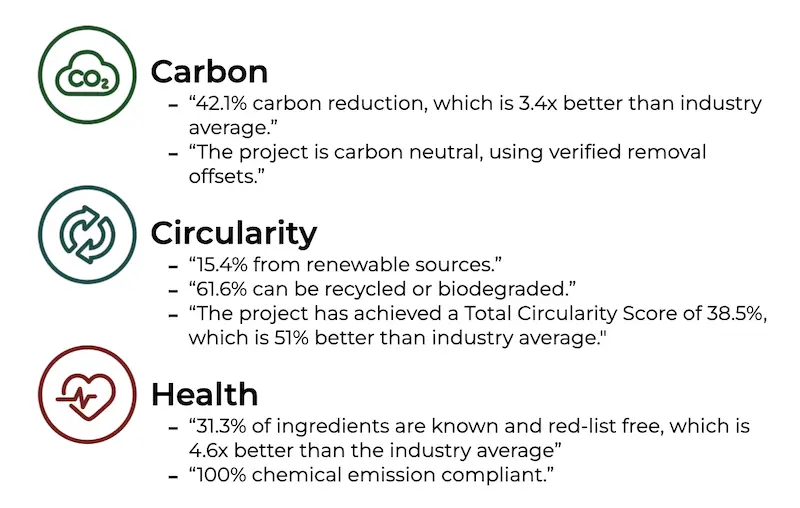RESET® Embodied
Why RESET Embodied?
Building materials and products are the DNA of the built environment, largely pre-determining the health and environmental impact of buildings before they are even built, during construction, operations, and long after they are gone.
As a result, there is hardly a more important topic than that of assessing and selecting building materials based on health, safety, and ecological metrics.
Unfortunately, the industry as a whole has been crippled by the lack of material data standardization. Coupled with the difficulty of obtaining data on materials and products and the overall complexity of material assessments has resulted in material data as being one of the more contentious areas in building design.
RESET Embodied was developed and built from the ground-up to completely rethink how to assess and analyze data as it pertains to materials, products, and finishes intended for installation and use in the built environment. By developing advanced software and tapping into a network of connected databases, the RESET Embodied approach takes what was formerly disparate data and makes it accessible, actionable, and scalable for a global community.
Download the RESET Embodied StandardHow does RESET Embodied work?
RESET is a modular standard, whereby each of the impact modules can be pursued independently. Details about each module is included below:
Modules
The RESET Embodied Standard currently consists of 3 modules, each with their individual data requirements and scoring:
RESET Embodied Health
Accounting for health based on chemical ingredients and chemical off-gassing.
RESET Embodied Circularity
Total circularity accounting for products and projects, including source of life (SOL) and end of life (EOL).
RESET Embodied Carbon
Accounting for carbon emissions from building material sourcing, transportation, and construction.
What makes RESET Embodied unique?
Similar to the RESET Operational standard, RESET Embodied is a performance and data driven standard.
It relies on sustainability data at the material level to quantify the performance of building projects, both new build and renovations, architecture as well as interiors.
RESET Embodied is unique as it analyses holistically Carbon, Circularity and Health.

RESET is first and foremost an accounting and auditing standard for environmental performance. Its primary purpose is to ensure that results are transparent, accurate, representative, comparable, and replicable.
Similar to financial statements, RESET is not a pass / fail system. Rather, it is a system and standard for measuring and reporting performance. RESET results can then be used to describe levels of performance and improvement of a project and a portfolio.
Results with Actionable Performance Data
RESET translates complex embodied sustainability and health data into measurable KPIs that serve to set targets and track process.

Communicating with Data
RESET provides projects with measurable embodied performance data. The data-driven results help users tangibly benchmark and communicate progress.
